The conception of this project took place as part of an illustration seminar at the Münster School of Design, in collaboration with the LWL Museum of Natural History in Münster. The museum commissioned us to design several outdoor posters that would make the diversity of its themes visible to visitors.
My focus was on the museum’s zoological and geological-palaeontological preparation workshops. In my project I present the in-depth work of the taxidermists and the atmosphere of the workshops. The job profile of taxidermists is extremely multifaceted: they not only have to have scientific knowledge, but also have to be able to act as artists and sculptors. Her repertoire includes knowledge of dissection techniques, the skillful handling of unpleasant odors, substances and chemicals, as well as impressive anatomical expertise and an understanding of the nature of flora and fauna. I was deeply impressed by this complex activity and the workshops themselves.
My idea behind this project was to bring the fascinating world of workshops to the outside world. I wanted to make it clear that many of the exhibits on display were created right here – in a place where the “magic” of preparation becomes tangible. As a viewer, you only experience the result in the exhibition, but the intensive work behind it often remains hidden. My approach was to make this hidden aspect visible and to make the viewer aware of the effort and dedication of the taxidermists.
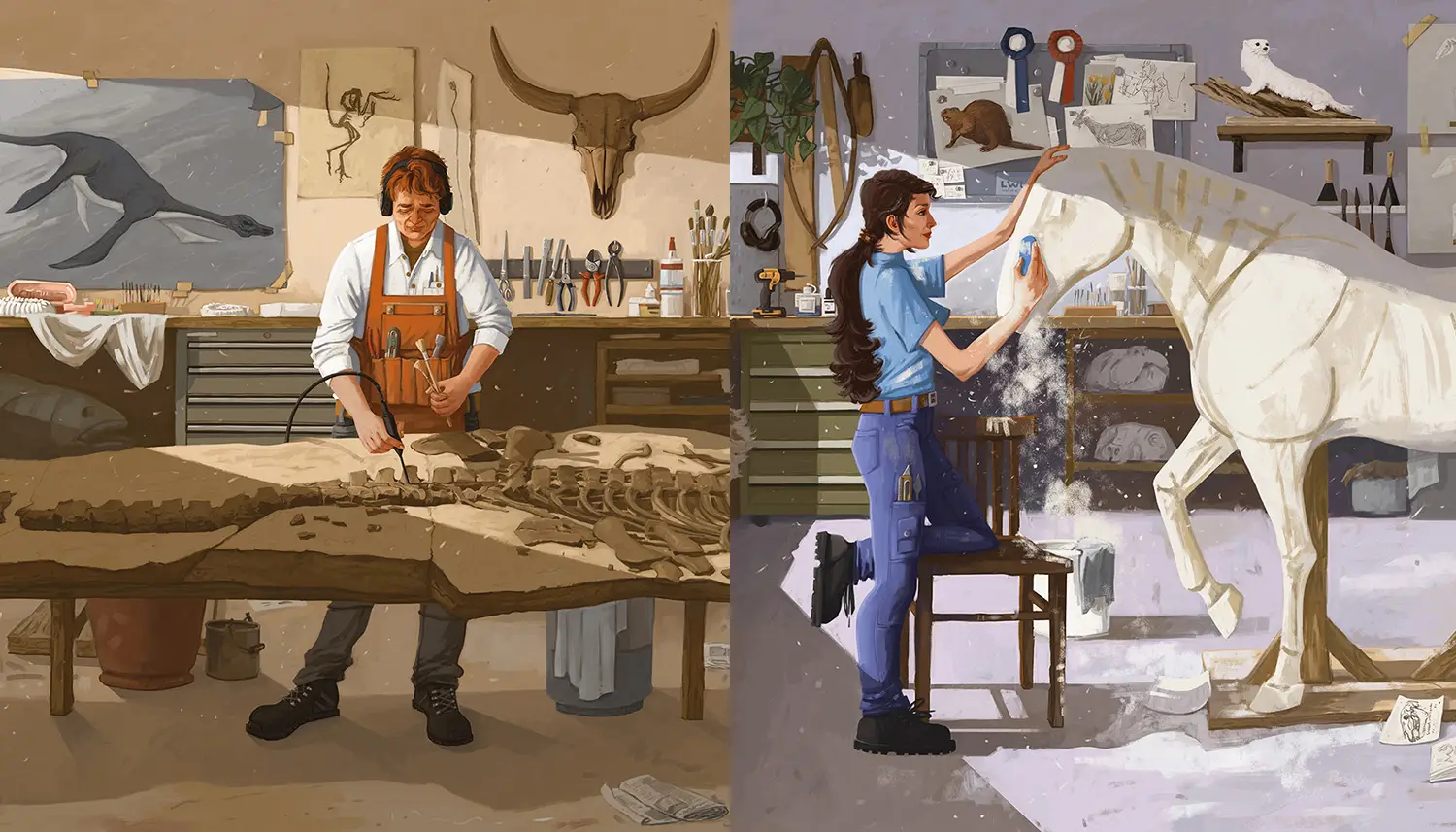
As the central motif for the poster of the zoological preparation workshop, I chose the depiction of a horse from the “All-rounder Forest” exhibition, in particular a mare of the “Rhenish-German Coldblood” breed, which was shown here as a moving horse. These horses, which are used in the forest, pull tree trunks and therefore play an important role in the horse- and agricultural environment of the Münsterland.
To enrich the composition, I integrated less prominent objects such as exhibits and tools from the zoological taxidermy workshop. The decision to use cold light was made to create a clear contrast to the warm colors of the geological-paleontological workshop. The zoological workshop is dominated by metal equipment such as scalpels and scissors, and the entire preparation process exudes a cool atmosphere.

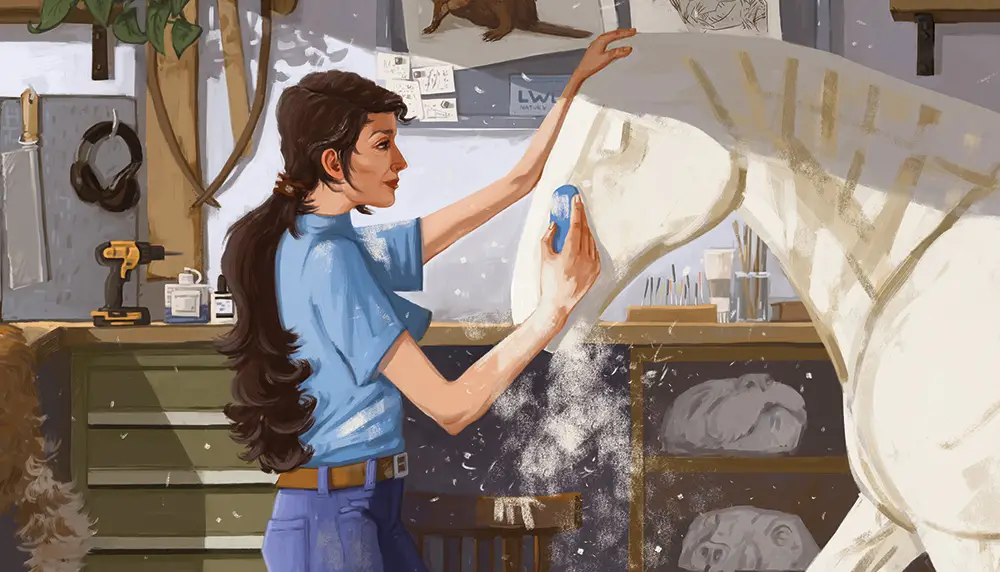




To adapt the complex composition, I used the proven method of the “golden ratio”, which has been used by many artists since ancient times. This harmonious rule, which combines mathematics and art, is often used in art, photography and architecture and is also reflected in natural harmony.
4th phase: draft


3rd phase: Composition finding

2nd phase: color finding
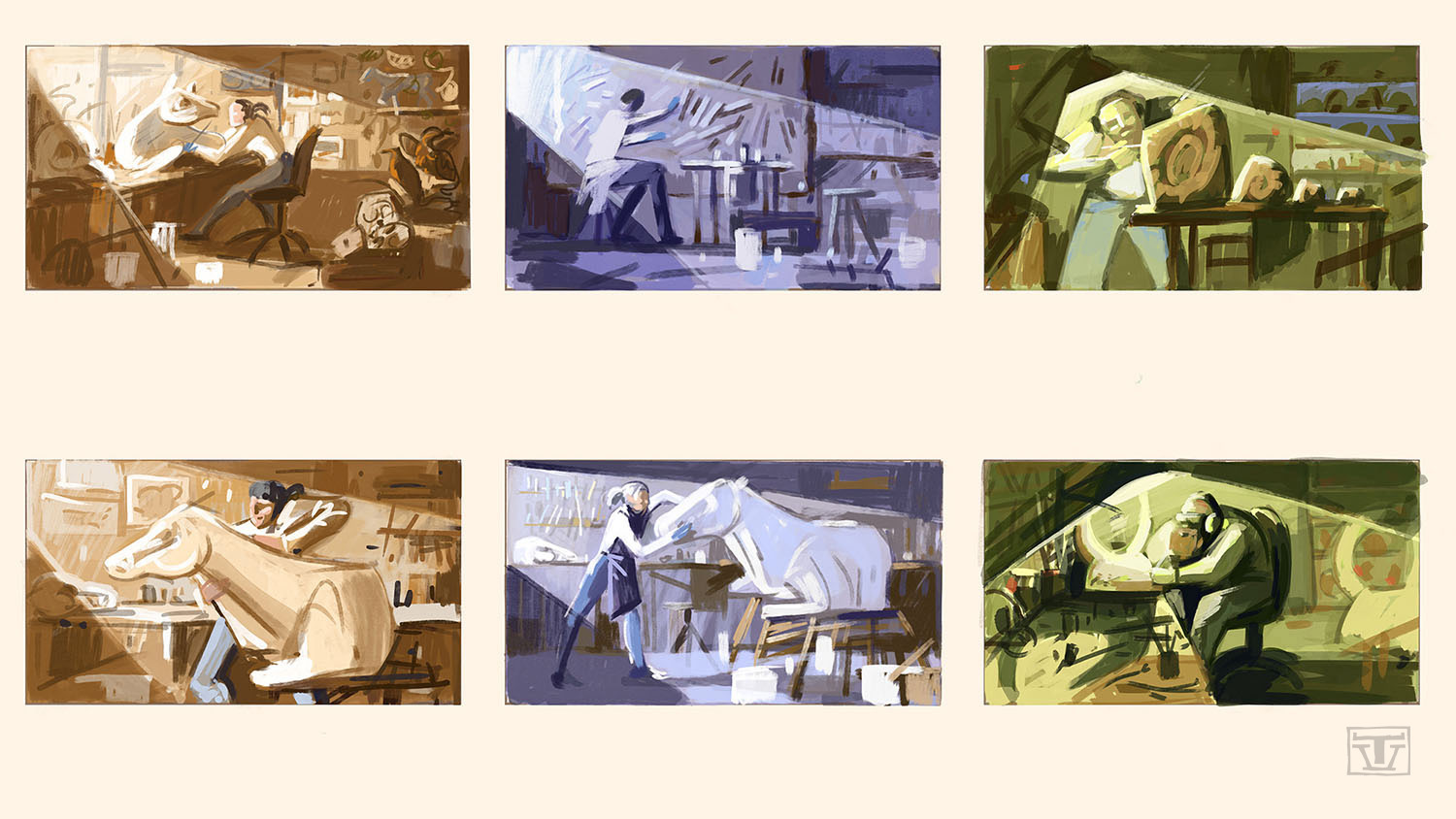
1st phase: idea finding
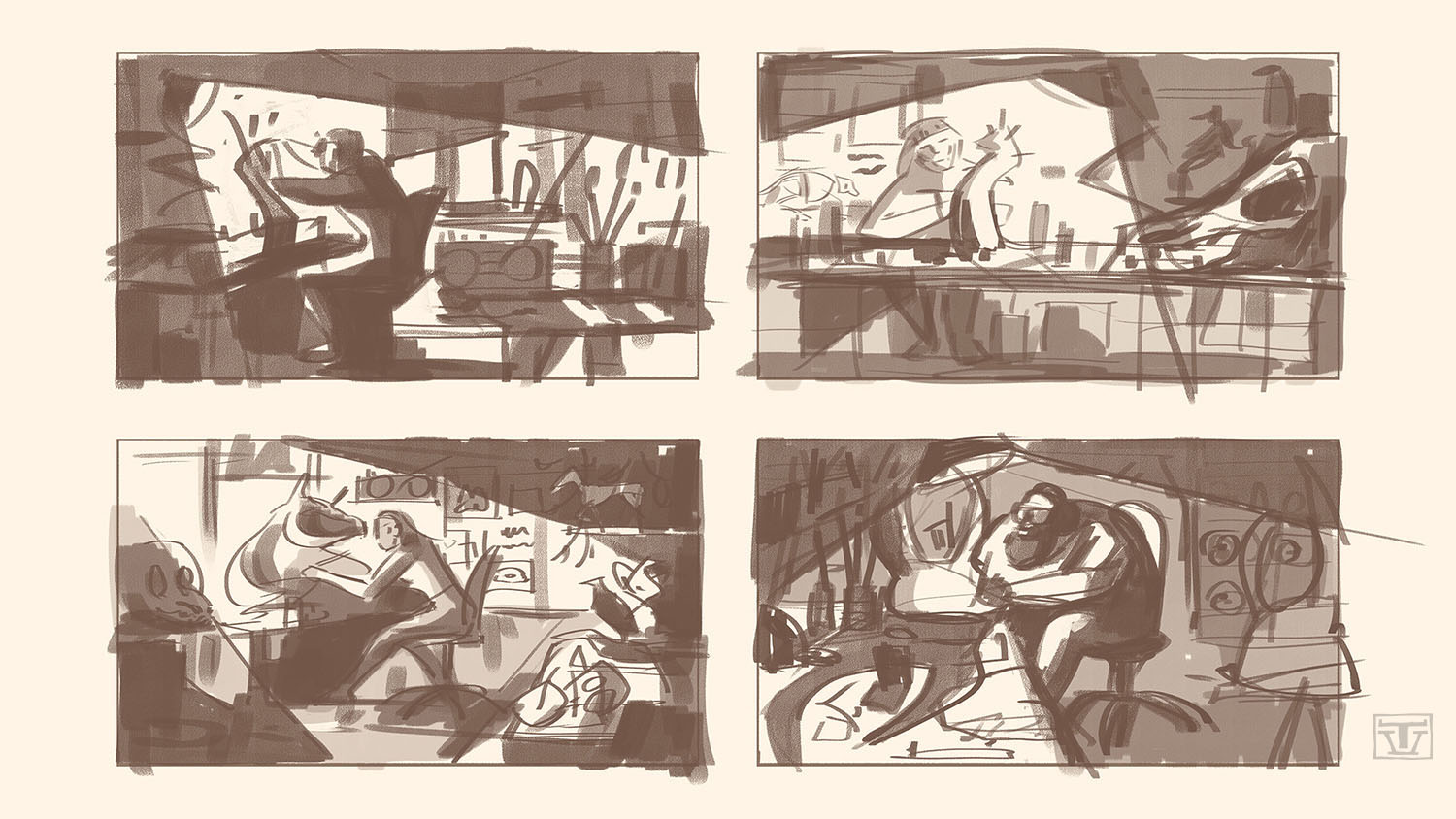
1st phase: idea finding
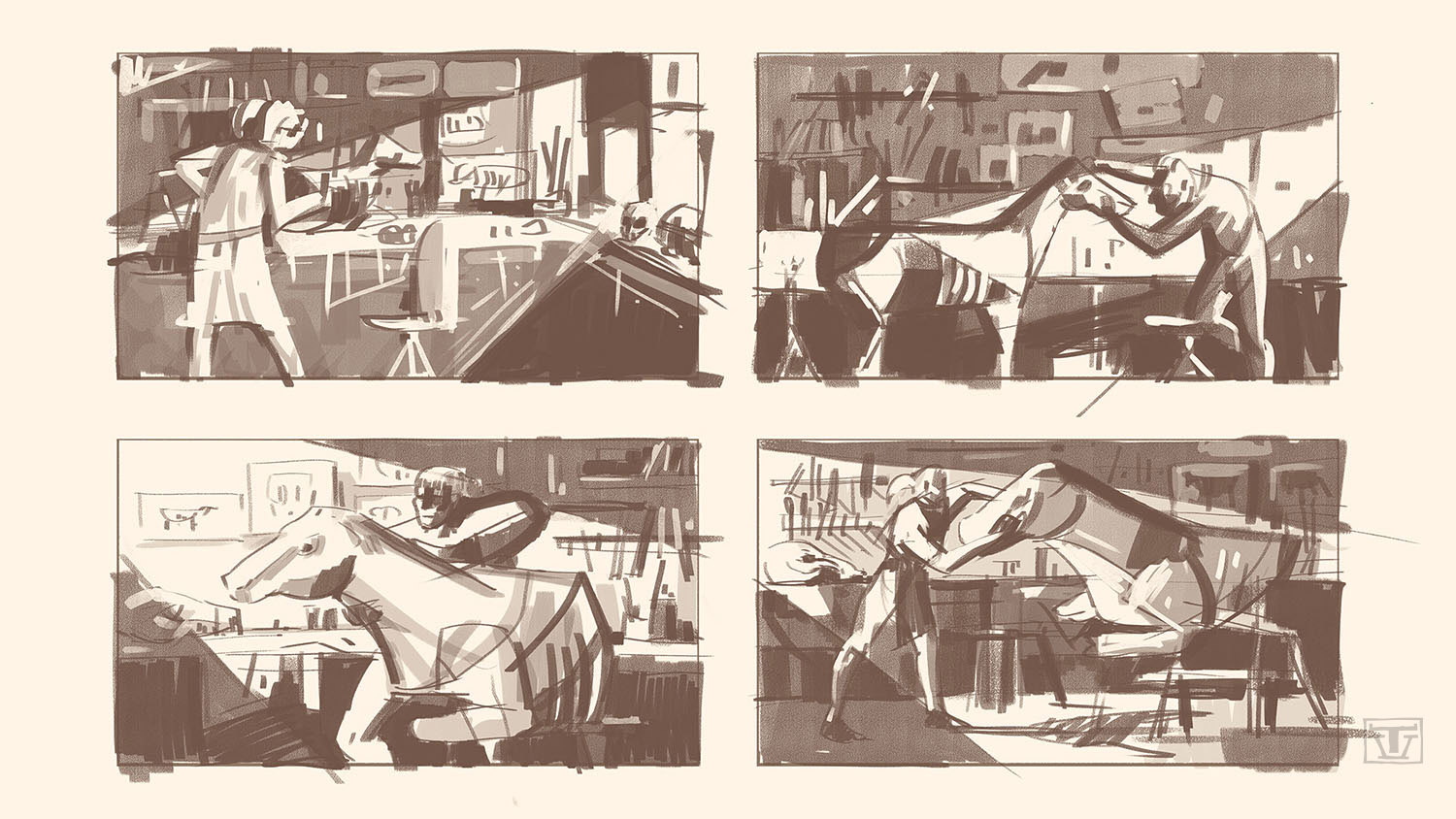
The main focus of my poster is the dissection of a swimming dinosaur, a member of the reptilian plesiosaurs that were once native to aquatic habitats. The depiction of the dinosaur’s original appearance can be seen in a picture hanging on the wall in the background. The color design uses warm tones that evoke associations with excavations, earth, sun as well as fossils and bones.
Detailed elements such as specimens and tools come from both the workshop and the museum or museum archive. A small board with specific details illustrates the wide range of tasks in this workshop, including modeling.

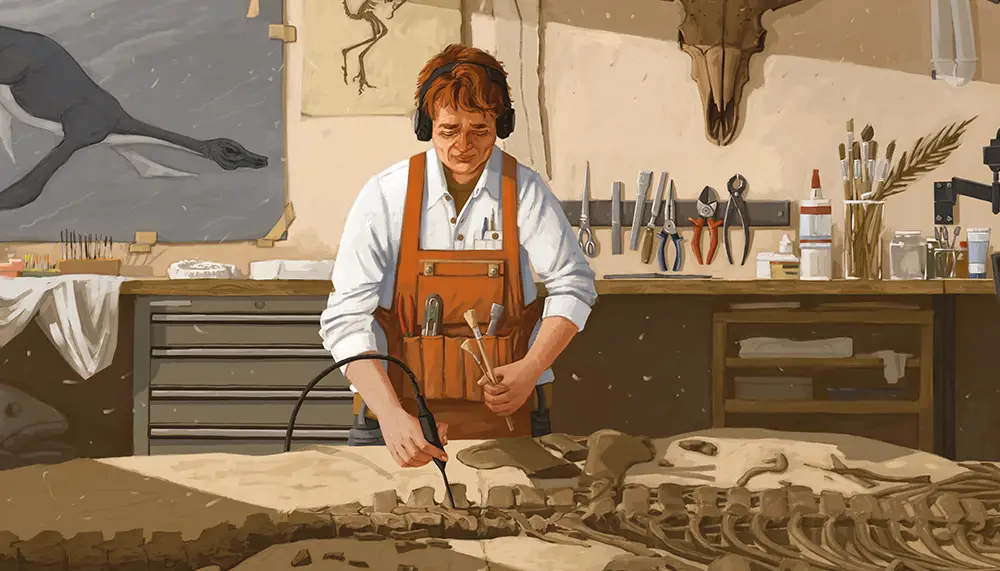

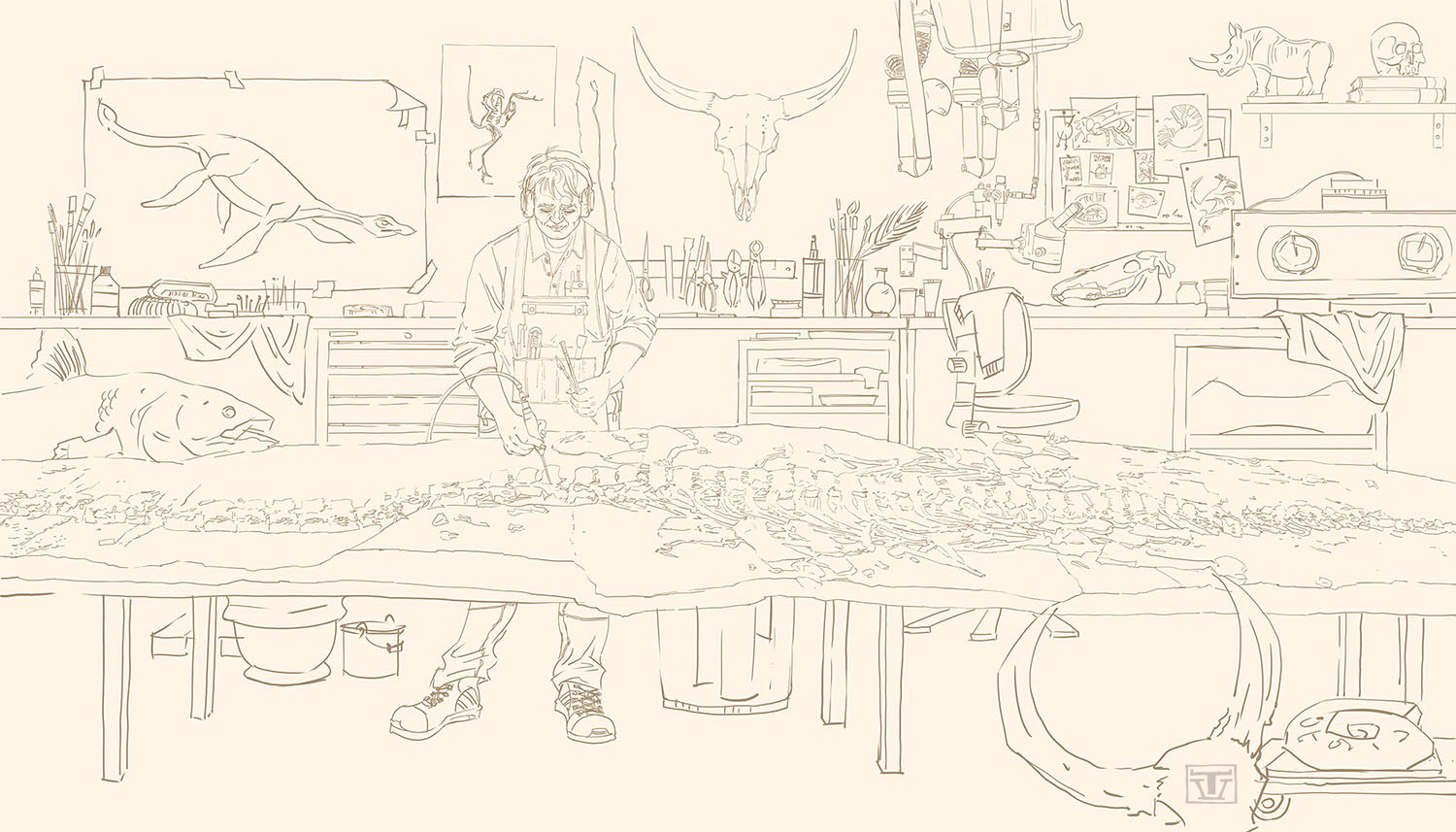


The use of the golden ratio method, as with the previous poster, also forms the basis for the composition here. The swimming dinosaur’s head serves as the center of the golden ratio and the spiral, which cleverly guides the viewer into the picture. Various details are placed along the lines of the golden ratio, including the height of the back table, the center of the specimen, the protagonist, and other background elements.
The table with the bones, facing the viewer, was further developed from the sketch to provide a more comprehensive view of the work. The size of the swimming dinosaur was precisely adjusted to human dimensions using images of real specimens. The color design aims to capture a “magical” moment created by the clever play of light and shadow.
4th phase: draft


3rd phase: Composition finding

2nd phase: color finding

1st phase: idea finding

1st phase: idea finding
